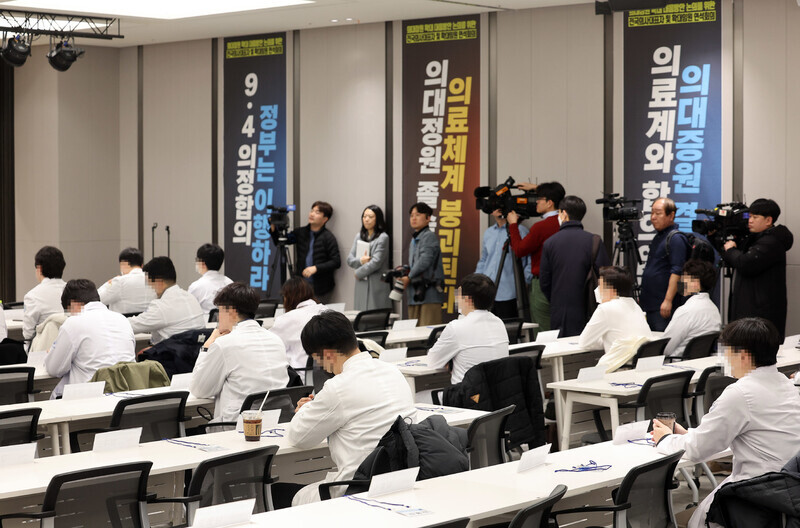
Medical centers throughout Korea were left scrambling to provide care and forced to turn some patients away on Tuesday as interns and residents at major hospitals stayed home from work, having submitted their resignations to protest new policies raising the cap on admissions to medical colleges.
These hospitals play an essential role in treatment, and the fact that they cannot function properly without interns and residents — staff who are undergoing a training process — shows how distorted the reality of health care in Korea has become.
This is also why the administration needs to go beyond simply increasing the number of physicians and implement real policies for increasing the public service role of health care.
A government examination of 100 teaching hospitals where around 95% of the country’s 13,000 interns and residents work found that 6,415 of them (55%) had submitted resignation notices as of 11 pm on Monday, and 1,630 had not reported to work. This means that roughly a quarter of the interns and residents who turned in their resignations had already walked away from those hospitals.
The administration issued work resumption orders to 831 interns and residents who were confirmed to have suspended their duties. As of the first day of the collective action on Tuesday, there were numerous reports of patients facing issues including postponements of scheduled surgery and limits on emergency room operations.
Since the 2000 episode involving the separation of prescription and dispensary practices, physician groups have routinely used interns and residents to flex their muscles when opposing government policies. The reason they have been able to do this is that hospitals, in their pursuit of maximum profits, have come to depend excessively on interns and residents who can be put to work for long hours at low wages.
Indeed, interns and residents represent 30%–40% of physicians at the so-called “big five” of tertiary general hospitals in Seoul, where they perform around 70% of the workload.
It was because of this situation that such an emergency arose in 2020 when interns and residents walked off the job en masse and patients needing urgent care were left unable to receive timely treatment. Korea may be the only country where physicians undertake collective action to protest an increase in physicians, but it’s also difficult to imagine emergency rooms being left unstaffed in any other country.
These structural issues are also a major factor in the inadequacy of the various emergency treatment measures that administrations have presented.
The Yoon Suk-yeol administration has announced plans to make use of public and military hospitals in the event that the situation becomes protracted — but in Korea, public health care only accounts for around 10%. The government also bears responsibility for failing to address the large hospitals’ practice of accepting patients with minor complaints as a way of earning money, when they should be focusing on urgent and critical patients instead.
The administration has also done nothing to address issues facing physician assistant (PA) nurses performing duties unofficially due to a shortage of doctors — only to then incur objections from nurses by sending them into the field with no legal protections to deal with urgent issues.
When the administration and physician groups face off, it’s the patients who suffer. The administration should not waver in its measures to increase the medical college admission cap, but it also needs to come up with more finely tuned emergency treatment measures.
Our current skewed situation is not something that can be remedied without simultaneous policies to increase the public nature of health care services.
Please direct questions or comments to [[email protected]]